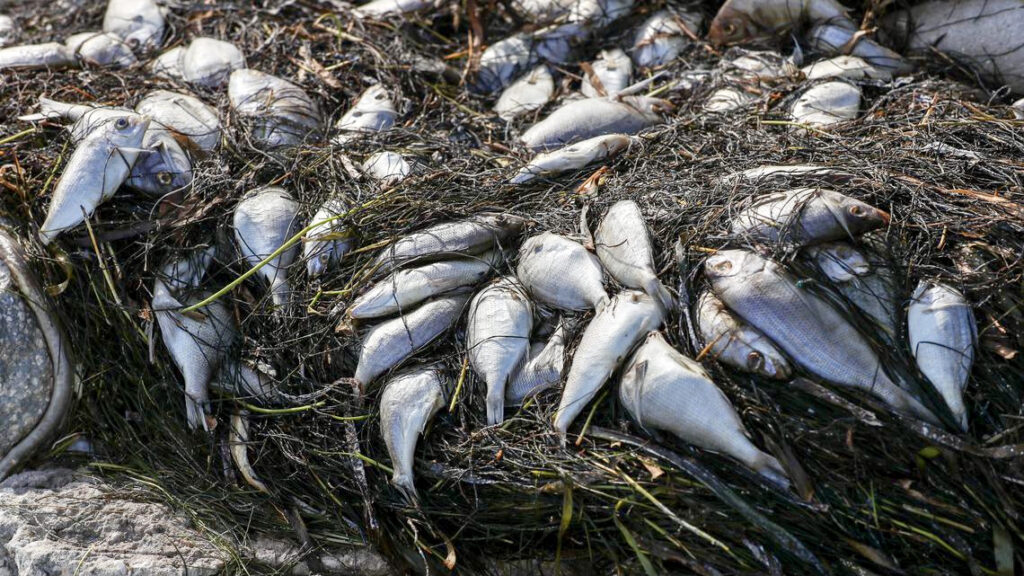Tampa Bay Times Editorial Board
This is what climate change smells like. It’s the stench of tons of rotten fish washing up on the shores of Tampa Bay.
It’s true that no one event, even a massive fish kill, can be attributed to climate change. But let’s follow the scent. First, the culprit behind the fish kill is Red Tide.
It’s a naturally occurring bloom of the algae Karenia brevis. People don’t directly cause Red Tides, but our pollution — especially fertilizer run-off — can make them far worse. Warming oceans, particularly when the water near shore heats up, also can make Red Tide more frequent and harmful, according to University of Florida research.
Tropical Storm Elsa didn’t kill the fish. However, its winds and waves probably blew the dead fish to Pinellas’ shores, where city and county workers have spent the last several days scooping them up by the ton.

Elsa formed on July 1, and no hurricane had formed this early so far east in the so-called Main Development Region since 1933. Also, Elsa was the fifth named storm of the year, something that usually doesn’t happen until the end of August.
We in Tampa Bay are particularly vulnerable to hurricanes because of our hundreds of miles of shoreline, our low-lying areas and our coastal development. In fact, a World Bank study ranked Tampa Bay as one of the 10 most at-risk areas in the world. Even though we’ve been lucky for decades, luck eventually runs out, and it takes only one big storm. Climate change and rising seas make this all worse.
And let’s not forget that 215 million gallons of wastewater were pumped into Tampa Bay this spring around Piney Point, the site of an old fertilizer plant where a lagoon was in danger of breaching. There is no hard proof that this pollution magnified any of the Red Tide outbreaks, but as Tampa Bay Estuary Program executive director Ed Sherwood told the Times last month, it “doesn’t take much to put two and two together.”
Climate change skeptics may say none of this — Red Tide outbreaks, early arrival of Elsa, tons of rotting fish — can be pinned on warming oceans and human-caused pollution. But waiting for absolute proof is a delaying tactic that keeps existing solutions from being employed to save the world for tomorrow.
If you wait for such incontrovertible proof, you’ll wait too long. You don’t always have to see the gun’s smoke to solve a whodunnit. Sometimes just catching a whiff is enough, whether it’s gunpowder or fish stench. Like right now.
Editorials are the institutional voice of the Tampa Bay Times. The members of the Editorial Board are Editor of Editorials Graham Brink, Sherri Day, Sebastian Dortch, John Hill, Jim Verhulst and Chairman and CEO Paul Tash. Follow @TBTimes_Opinion on Twitter for more opinion news.
“The Invading Sea” is the opinion arm of the Florida Climate Reporting Network, a collaborative of news organizations across the state focusing on the threats posed by the warming climate.



